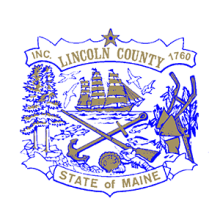Construction Begins On Fidium’s Lincoln County, Maine Fiber Expansion
The Maine Connectivity Authority (MCA) continues to make steady inroads bridging the state’s long standing digital divide on the back of federal grants and a public private-partnership between Lincoln County and Consolidated Communications (Fidum Fiber).
In January, Fidium announced it was beginning construction on the project, which should bring fiber connectivity to 8,300 homes and businesses.
The first phase of the project aims to expand fiber to the towns of Wiscasset, Whitefield, and Edgecomb, as well as parts of Alna and Westport Island. Partial Route 1 closures were required due to fiber installs.
Ultimately, the partnership is also intended to bring fiber access for the first time to Alna, Boothbay, Boothbay Harbor, Dresden, Nobleboro, Southport, Waldoboro, and Woolwich, in neighboring Sagadahoc County.

This project is being paid for by American Rescue Plan Act (ARPA) funds, an MCA grant, and Consolidated Communications (Fidium Fiber). The funding was part of a broader $9.6 million in grant awards announced by the MCA last August, intended to bring fiber to 15,561 homes and businesses across 12 widely underserved communities in the Pine Tree state.
Lincoln County in particular saw a grant award of $6 million matched by $24.3 million in private and public investment – including county ARPA funds – which the MCA notes was the “highest percentage of financial commitment from any public-private partnership awarded through an MCA program to date.”
“We're thrilled to partner with Fidium to expand their fiber broadband network to our community,” Wiscasset Town Manager Dennis Simmons said of the opportunity.



